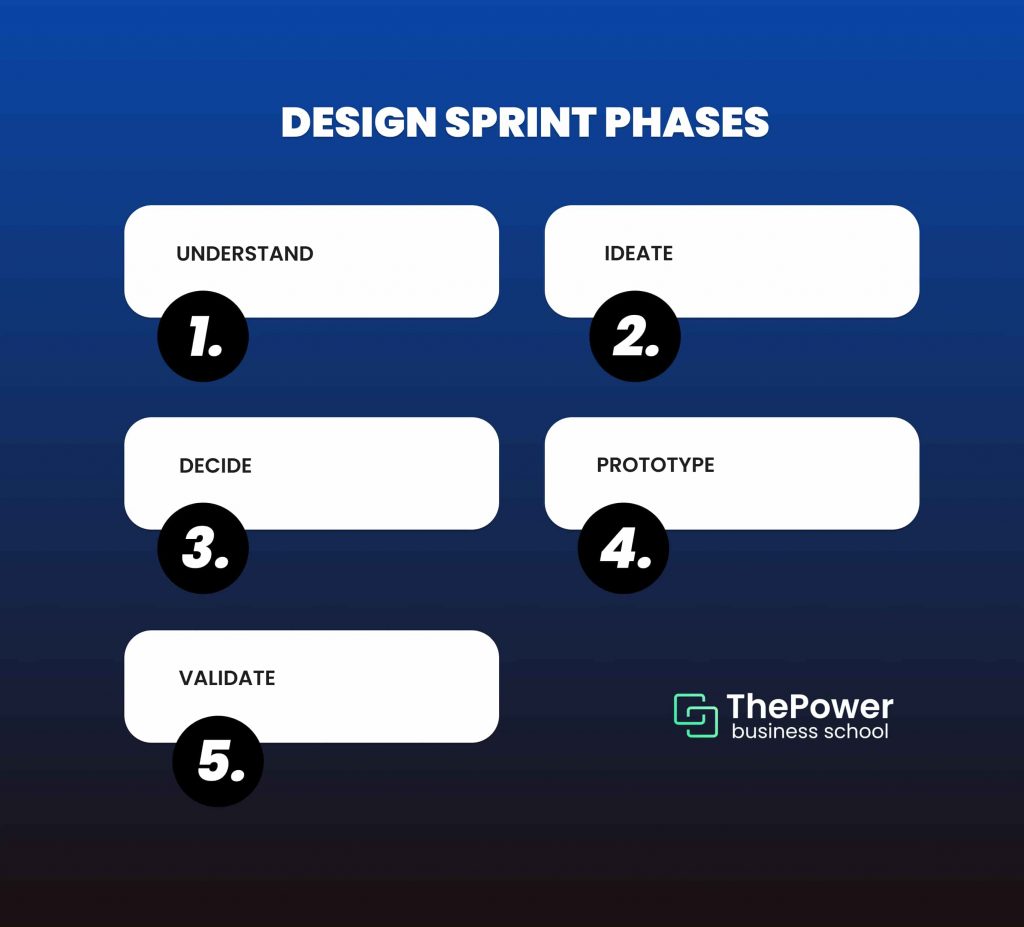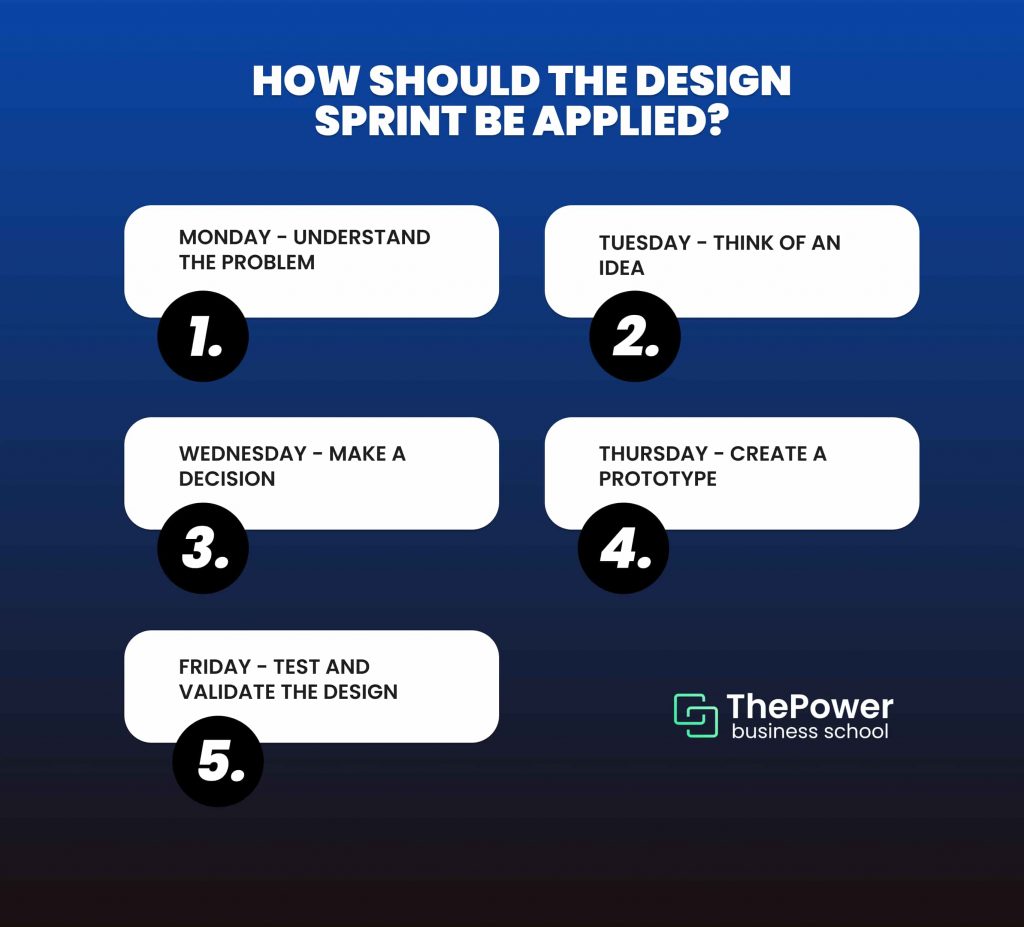Accelerate Innovation with Design Sprints: A Proven Methodology
Running a business today means coming up with innovative product and service ideas that can stand out from the competition.
It's well known that in the immediacy era in which we live, products don't usually have a long shelf life.
Because of this consumers are already conditioned to get rid of what they consider outdated to go for the latest model of a product.
This is something that puts a huge burden on companies, who are forced to launch new product designs more frequently.
If you are an entrepreneur and you don’t know what to do, you should know that there are several work methodologies that promote innovation without limitations.
This is where the Design Sprint appears as a feasible solution that has been widely used by the largest companies.
What is the Design Sprint?
If you have never heard about this work technique before, it’s important to clarify what it is.
This is a product design or problem-solving methodology that works in a five-day process.
During that time a series of fundamental actions will be carried out that will allow the work team to devise everything necessary without wasting more time than necessary.
It is known that when trying to think of a working idea that can be well implemented, many companies often take months or even years to do this.
It’s clear that it’s a process that takes time, because before starting to develop a product, the idea must be born and must go through an evaluation process to determine whether it works or not.
This is why many business ideas tend to remain stagnant and companies keep accumulating a huge pile of uncompleted ideas.
Faced with this great deficiency in the decision-making process, the Design Sprint was born to facilitate everything and set a time limit to a work team so that it doesn’t take longer than necessary.
The five steps established in this tactic aim to simplify the processes and get to the point from the beginning.
If you are going to work with this methodology, your employees should follow these five phases, one for each day:
Understand
Ideate
Decide
Prototype
Validate

How did the Design Sprint originate?
The Design Sprint was created around 2010 by Jake Knapp, John Zeratsky and Braden Kowitz, and started to become popular after the publication of their book "Sprint: How to Solve Big Problems and Test New Ideas in Just Five Days" in 2016.
The truth is that Knapp, from a very early age, discovered his love for well-executed business processes and began to think of various techniques to simplify them.
Although it wasn't until he started working with Google that the idea of the Design Sprint was born.
Working within this well-known company, he found himself immersed in a work environment where they were given a tight deadline.
This led him to realize that the less time there is available to work, the more the workers will focus on getting things right and developing ideas individually.
From this, and with the help of his two other colleagues, they created the basis for the Design Sprint.
What is needed to work with the Design Sprint?
Before explaining how the phases of the Design Sprint are composed, it’s important to be clear about what is needed to apply it effectively.
As you can imagine, the most important thing is to have a business project in which you need to design new work ideas.
But there are also other aspects that must be fulfilled if it is to be a methodology that generates good results.
That is why before even thinking about applying the Design Sprint, you need to verify that you have the following:
1. A good work team
Human resources are the first thing that every company needs to have.
It is estimated that seven to nine people are needed for the proper implementation of this strategy.
One of them should play the role of facilitator or team leader, who will be in charge of guiding everyone through the steps to be followed, in addition to being the person in charge of collecting all the necessary data before starting the project.
As for the rest of the team, it’s recommended that workers from different departments of the company are present: sales specialists, marketing, programmers, among others.
In this way, all the fundamental parts of a company will be able to work collaboratively throughout the process.
2. A space to work
The entire team will need to meet for five days in a space where they can talk and make the necessary decisions.
While it is true that today many prefer to work in virtual spaces, it is recommended that for this methodology they meet in a physical location.
The ideal is to have a spacious office with a comfortable environment where everyone feels at ease, with whiteboards on the walls and excellent lighting.
3. All the basic office supplies
Keep in mind that each employee may prefer to work or express their ideas differently.
That's why the workspace should have all the necessary materials to develop a good project.
For example, you need computers and tablets for programmers or designers, as well as sheets of paper, pens, markers and tape to take notes on ideas and create a project outline.
The point is to provide your team with everything that’s necessary for them to express the ideas they come up with.
4. Working time only for the Design Sprint
Since this tactic only offers five days to get the work done, these will be days where the work days will be intense.
If you want to ensure that you get good results, it is important that everyone involved is free from their other responsibilities during this time so that they can be focused on the project.
The workday for those five days should consist of about six to eight hours of work per day.
5. Hydration and nutrition
Since you are going to have an entire team in an office for five days, you need to make sure that they can recharge their energy during working hours.
This is why you need to ensure that they are well hydrated and fed.
You need to have large meals covered as well as snack foods that will allow them to replenish their energy whenever they need it.
Although they will be working up to a maximum of eight hours per day, during that period they also need their well-deserved rest time.
How should the Design Sprint be applied?
Now that you have a more complete perception of what the Design Sprint is, you are much more prepared to start applying it within your company.
However, you still need to know what to do in each of the phases.
For this we will explain what is recommended to do in each of the days according to the organization of a work week:
1. Monday - Understand the problem
During the first day, the evaluations of the problem and the type of design to be created should be carried out.
In this first phase, the facilitator should present to the entire team the data he/she has collected and how the problem can be addressed.
Along with this, a thorough investigation of the needs to be met should be conducted and the members will be given the opportunity to express their individual ideas.
This will ensure that on day one everyone is on the same page and will lay the groundwork for everything that needs to be created.
2. Tuesday - Think of an idea
On day two all team members should come up with a design idea.
Based on what was explained in the previous day's meeting, it is important for each worker to think of a solution in his or her area of work.
At this point it’s more valuable that people offer critical ideas, rather than artistic ones.
Also, because everyone will have their own sketch of an idea, when deciding which one to implement, there will be many options.
3. Wednesday - Make a decision
On the third day, with the team's solutions in hand, it will be time to make a decision.
Although everyone will be in favor of the idea that each one has created, a consensus must be reached in which the majority chooses the best of them all.
That is why teamwork is so valuable in the Design Sprint.
After making a decision, the chosen idea will be detailed on the same day in order to create a storyboard of everything necessary for its implementation.
4. Thursday - Create a prototype
As stipulated in the detailed sketch of the idea, it will be time to create the prototype.
Many people often feel that a single day to do this is too little time, but the idea is for everyone to work on what has already been detailed in the previous days.
To achieve this, in this phase you should give a task to each of the members so that at the end of the day they can have the official version of the prototype they are going to work with.
5. Friday - Test and validate the design
After having the prototype ready, the last day of the Design Sprint will be the testing and validation date.
It’s important that in this phase you gather several users who are willing to test the final product and then give their feedback in an interview with specific questions.
This is something that can be done during the first half of the day, so that they then have time to have a final discussion about the results obtained and determine whether the idea will be validated or not.

Which companies have worked with Design Sprint?
Throughout the article we have mentioned that this is a methodology with which several well-known companies have worked, but we have not said which ones.
So before we say goodbye, we will tell you about three of them:
The creator of this strategy himself worked for a while with Google and implemented the Design Sprint techniques.
Among the projects that this company has completed thanks to this technique are the email application and the definition of the functions of each of its parts.
2. Airbnb
The multinational lodging company, Airbnb, is another of the most recognized companies that has confirmed the use of this methodology.
Its work team implemented the Design Sprint to create the travel booking process for its website and mobile application.
3. Slack
This messaging company for companies and workgroups carried out a redesign of its website a few years ago.
During this process, employees worked on this great strategy to cover the flaws of the previous design and meet the needs of users.
In summary, since the Design Sprint is a work methodology that works in just five days, it has become very popular within the business sector.
As we mentioned, many well-known companies have applied it and it has generated very positive sales results.
That’s why, if you’re starting a new business or you already have one, but you want to reinvent your products, you can do it with this type of work technique.
If you have already used it, let us know in the comments how it has helped you.






